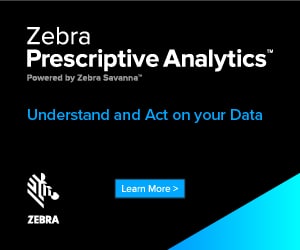
Discount fraud ranks high on the list of activities that concern loss prevention (LP) professionals the most. Discounting can be a perfectly legitimate practice, which makes it difficult to sort the valid transactions from the improper ones. Every year, retailers lose tens of millions of dollars to illicit discounts.
The key to stopping these damaging fraud schemes lies with the data. The most successful retail LP teams know that data cannot be manipulated and that the right, advanced solution can flag even the most subtle improper discounting activity. Many use advanced data analytics solutions like prescriptive analytics to identify any discount fraud and automatically alert their people to respond. Here are four types of discount fraud that advanced analytics can identify and flag before losses increase:
Coupon Misuse
Most retailers offer a much appreciated, yet extremely risky service called coupon refunding. This process allows customers who forgot to use coupons during checkout to get the cash value after the fact. A service-desk associate will take the customers’ coupons, verify all the relevant items are on the receipt and hand over the coupons’ face value in cash.
The potential for fraud is high because associates don’t necessarily need a receipt to refund coupons. Theoretically, they can refund coupons to themselves, pocketing the cash afterwards. If they leave the coupons in their tills to be reconciled, no one will suspect anything.
Data analytics can mitigate this risk. There are a variety of potential methods, but one of the simplest and most successful is flagging coupons that are refunded outside of an order. Any associate who performs an above-average number of these non-receipted coupon refunds triggers an opportunity, which is sent to LP with instructions to launch an investigation. Those actionable insights are characteristic of advanced analytics solutions like prescriptive analytics, which save the user a significant amount of investigation time.
Markdown Abuse
This activity is especially popular after holidays when stores mark down seasonal items, sometimes as much as 80% off. It’s quite simple for customers to place these markdown tags on more-expensive items to save big money. Some especially popular targets for this tag-switching scheme include premium electronics, designer clothing and alcohol. To avoid suspicion (because few associates will believe a customer who presents an Xbox Series X with a 75% off sticker on the box!), the perpetrators often check out with a colluding coworker or at self-checkout. This added element of collusion makes the scheme much harder to detect.
A key strength of some advanced analytics solutions, like prescriptive analytics, is a machine-learning capability called “clustering” (i.e. grouping entities like associates or stores based on similar behaviors or characteristics). Clustering empowers LP professionals to determine average performance benchmarks for certain KPIs, like markdowns processed per hour. The machine learning uses this benchmark to flag any associates or stores showing an excessive number of markdowns. If an outlier is found, the solution can send LP a course-correcting prescriptive action, ordering an investigation. Prescriptive actions make it easy for LP teams to narrow down the scope of their investigations and intervene quickly.
Employee Discount Abuse
Employees can get a bit too generous with their special discounts, sometimes sharing them with acquaintances or even random customers. Any abuse needs to be identified and stopped before the perpetrators share the discount any further – the losses add up fast.
As mentioned previously, advanced data analytics can quickly and easily identify employee-discount abuse by creating a benchmark average for every employee’s discount spending. Any employees with significantly above-average discount activity are flagged for follow-up by LP. The right solution can also identify other telltale signs of employee discount abuse, including:
- A discount used with someone else’s loyalty card
- A discount used at multiple stores within minutes of each other
- A discount applied to multiple items throughout the employee’s shift
- A discount on a transaction containing only high-shrink items
This logic can also be used to flag similar types of discount fraud, such as with military, senior or early-bird discounts.
Introductory Discount Abuse
To incentivize shoppers for their patronage, many retailers offer e-commerce customers a welcome offer to entice them to sign up, often a generous discount. But some customers go further by trying to apply multiple discounts to a single order (with the help of various false aliases) – a practice known as “stacking.” And many times, they are successful. Loopholes that allow discount abuse are not unheard of in retail – fraudsters know it, and they will go to great lengths to find them.
Many retailers use advanced analytics to identify and eliminate this type of fraud. One especially successful methodology involves flagging e-commerce orders with high discount activity. You can set the discount threshold to whatever you deem appropriate for your business, making it easy to see any suspicious activity like stacking.
Some solutions can be further configured to flag addresses with multiple heavily discounted orders en route simultaneously. The logic is simple: fraudsters can easily change the name or phone number on their orders to (somewhat) cover their tracks. But if they actually want the product, the address must stay factual – thus pointing investigators straight to the culprit.
For more information on using prescriptive analytics and other technologies to stop discount fraud, visit our website or ping me at scott.pethuyne@zebra.com.
"four" - Google News
October 30, 2021 at 01:03AM
https://ift.tt/3bsMkbO
Using Data to Stop Four Types of Discount Fraud - Loss Prevention Magazine
"four" - Google News
https://ift.tt/2ZSDCx7
https://ift.tt/3fdGID3




No comments:
Post a Comment